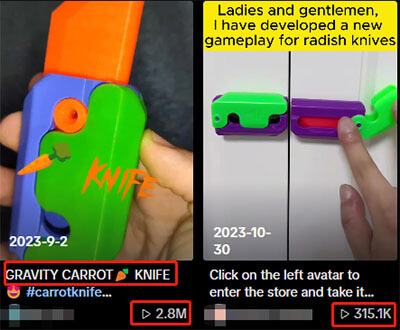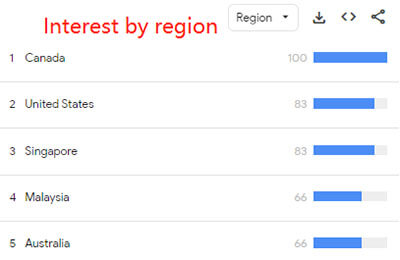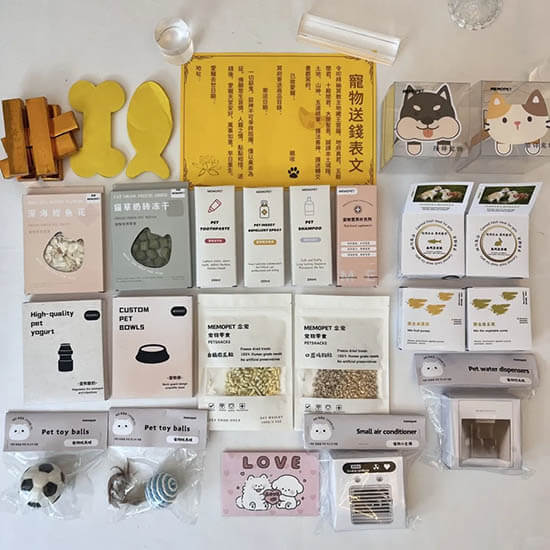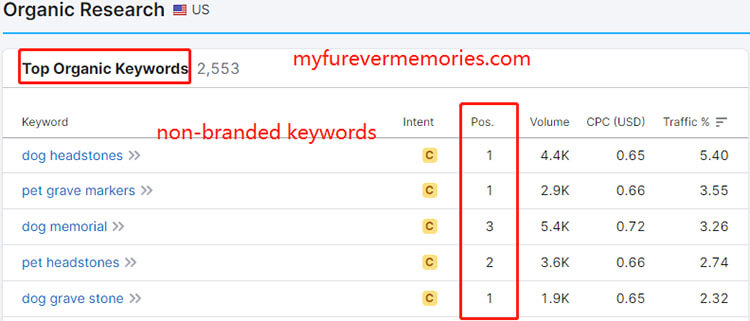Nowadays, doing a dropshipping business isn’t easy. Although it’s a low-cost, low-risk e-commerce business model that alleviates the burden of inventory, sellers primarily sell on-stock products and often find themselves in fierce competition. To differentiate oneself in a crowded market, finding a small niche can be an effective strategy. Today’s blog is to address the following 5 top questions about dropshipping niches.
What is the best niche for dropshipping?
The best e-commerce niches indeed vary from one dropshipper to another. Some individuals have a keen eye for spotting trending products that are easy to sell with small advertising expenses and can earn fast money. Take ‘3D Gravity Carrot Knife’ plastic toys as an example, which went viral on social media platforms like TikTok. Some quick-thinking sellers spotted this trend and sold such items rapidly on Amazon, eBay, etc., capitalizing on the demand surge and making quick profits.
In essence, the niche options mainly depend on personal expertise, available funds, and specific purposes to start dropshipping.
Start dropshipping with a general store or single product store?
It’s a top concern to many beginners in dropshipping – a single product store or a general store, which is best to start? Here are recent 2 questions in the “r/dropship” community of Reddit.
Click to enlarge
The dropshipping model we’re most familiar with is to dropship dozens or hundreds of different product types in general stores for reselling, just like the screenshot mentioned “selling Christmas supplies or various gadgets like lamps”.
This model essentially casts a wide net, leveraging information gaps and heavy advertising to drive traffic and make money. However, the internet has made information highly transparent, and the cost of acquiring traffic is high, making it harder to profit, especially for beginners with limited budgets.
Because products selling well will quickly be followed by a large number of sellers entering the market. Some can sell items at lower prices and with stable product quality & supply due to wholesaling benefits. It’s hard for small dropshippers to compete. Although there might be some profit, you have to spend much effort & time constantly selecting new products & running ads to drive traffic. Over time, profits decrease, making it unsustainable for business growth.
Another approach is to dropship several selected types of products (e.g., lighting, tech) and list them in a single product store to test the niche market without holding inventory. This is the right way to do dropshipping.
Most of our successful startups and small clients have done just that. Once they find a product that sells well, they start small wholesale from suppliers to lower product sourcing costs, make simple customizations to differentiate and expand the product range, and meanwhile refine marketing to build their brand.
How to find dropshipping niches?
Both new and experienced dropshippers are looking for their own niches. It’s common to get inspiration by browsing major e-commerce platforms like Amazon and AliExpress and seeing what’s trendy on social media platforms, especially TikTok, Facebook, etc.
You can also find niche product ideas from Chinese suppliers. Taking JingSourcing for example, every month, we receive thousands of inquiries and compile monthly product reports to bring you inspiration about niches. Subscribe below to stay updated.

Explore the newest & hottest niche products by downloading Jingsourcing’s monthly report.
We pick up the most popular items from 1,000+ orders by our clients to inspire you to find winning niches.
Beginners and small sellers should niche down into smaller markets.
Many niche markets today are broad, like pet supplies, which have become saturated with many well-established businesses. Some people choose to focus on subcategories like chicken and goose clothing, shoes, toys, etc. Some choose the emerging niche of pet funerals. Google Trends shows there has been stable search interest in pet funerals over the past year, with Canada, the US, and Singapore as the top audiences.
Click to enlarge
JingSourcing data also shows some of our clients engaged in e-commerce business in the US are involved in this dropshipping niche. Their products include POD urns with personalized pet photos, custom pet coffins with cushions or pillows, and bundle pet sacrificial supplies as kits like favorite snacks, toys, and paper money to burn. Click to enlarge the 3 pictures below. Image sources from Amazon, not our clients’.
Conduct product and market competition analysis while niching down.
Niching down is to avoid highly competitive markets while ensuring there is enough demand in the chosen niche. Use tools like Google Keyword Planner to check the search volume of your niche keywords. Avoid choosing keywords with very low search volume, like a few dozen searches, which are too tiny to make money and grow your dropshipping business. Here is the search volume of pet funerals.
Click to enlarge
About analyzing competitors, use professional tools to obtain precise data for analysis. For example, use Jungle Scout to understand competitors’ product sales data and advertising spending on Amazon. SimilarWeb or SEMrush can help analyze competitors’ website traffic, including organic and paid traffic sources, to evaluate their market performance and marketing strategies.
List “stores that have been established in the last 3-4 years, with similar budgets as you and good sales data” to further analyze the following 2 aspects:
Target audience core concerns segmentation: Investigate the most critical issues that the audience cares about when using the product, such as functionality, price, style, etc. Here is a niche custom-pattern diabetic socks business case.
Usage scenario segmentation: Design and promote products based on different usage scenarios or situations to meet specific user needs.
For example, MyFureverMemories, established in 2020, taps into the deep bond between pet owners and their pets and specializes in selling customized pet tombstones and memorial items. The pet funeral industry is relatively niche, so non-branded keywords are easier to rank highly. MyFureverMemories seized this opportunity to optimize SEO keywords and rank on the top page of Google, with around 11k organic traffic in the US.
Click to enlarge
Consider the product's logistics and delivery costs when estimating profits.
Before entering any dropshipping niche, it’s important to calculate the profit margins. Compared to wholesale, dropshipping may not offer advantages in product purchase prices, making the logistics and delivery costs particularly crucial in profit estimation.
Suppose you select a good niche home furniture but it has a large size and weight. The shipping prices will go crazy, greatly lowering your profits and even leading to losses. In contrast, small and lightweight products will save you a lot in transportation costs, such as T-shirts in the plus-size apparel market, kitchen gadgets, etc.
Seven dropshipping niches small sellers should avoid
Women's clothing
This market is highly competitive, and style is king. You need to be good at selecting styles, constantly launch new designs, and find suitable models and photographers to shoot eye-catching photos and videos for visual marketing. Additionally, you need marketers to effectively promote your products. All these can get costly.
Skincare and beauty products
Not only do you need enough funds to run ads for promotion, but you also need brand influence. For products applied to the face, few consumers are willing to try an unknown niche, even if you claim it’s effective, stylishly designed, and packaged luxuriously.
Products within the supplement, health, and food industries
Common examples include baby formula, dietary supplements, protein powders, etc. The risks are not worth taking. For instance, there’s a significant risk of facing legal action if a customer has an allergic reaction due to an ingredient that was not correctly labeled by your supplier. Such a scenario can be disastrous.
Copyrighted counterfeit products
Selling such items is not only an amateur and poor business practice, but it also carries legal consequences. Because counterfeits are illegal in many countries.
Products with complex tech and functions
While they may look excessively appealing, they are prone to bugs when used. This leads to bad shopping experiences for consumers and results in negative reviews, which severely affects your dropshipping business.
Extremely fragile products
On one hand, packaging and shipping costs are high. On the other hand, the high return rate from consumers increases your after-sales costs.
Seasonal products
This product type will be useless after the holiday ends unless you can transition out with new products.
Final thoughts about dropshipping niches
No one can tell you a niche that wins time and time again. Never easily believe so-called guru niche strategies. If someone is willing to share a profitable niche for free, why don’t they make that money themselves?
When you’re interested in a niche market, you should analyze and judge it yourself. List some products in that niche and run ads to see if it’s a good niche. If not, move on.
Continue that process until you find a well-performing niche. Once you find one, consider shifting to a wholesale and private label business model to lower supply chain costs and optimize advertising and SEO strategies to attract organic traffic. This is a long-term strategy that requires patience and continuous effort.











Leave A Comment